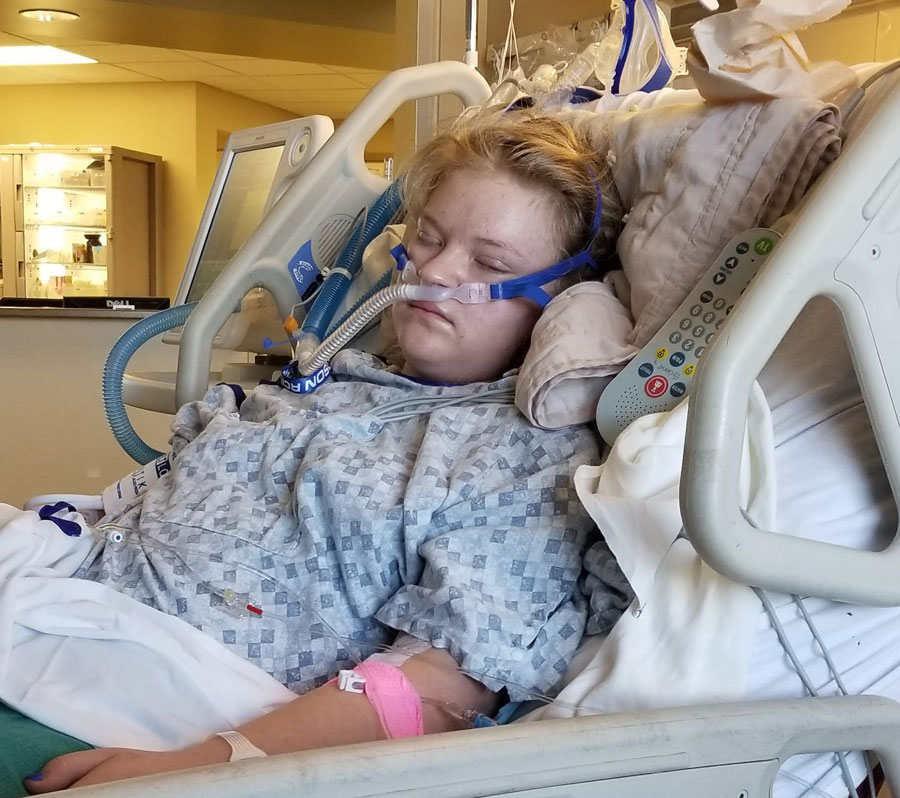Keeping an eye on sick children can be a matter of life and death, says local mom
Published at
IDAHO FALLS — In the wake of recent Idaho flu deaths, one local mom is sharing her daughter’s near-tragic experience to raise awareness that doctors can misdiagnose and parents must monitor their sick children.
RELATED | 2 Idaho children have died from flu-related causes
It was early January 2019 when LaNay Robbins, of Idaho Falls, found her 19-year-old daughter, Hailey, lying down with the covers completely over her, nearly lifeless. She had been sick for some time, and when her sister Savanna checked on her that Sunday, she told her mom that Hailey looked gray.
“From her mid-arm and mid-thigh down was blue, and her whole body was purple,” LaNay said.
They had a pulse oximeter handy and took her blood oxygen level. It read 77. LaNay and her husband knew Hailey needed to get to the emergency room.
But this wasn’t Hailey’s first time seeking help from doctors. In fact, Hailey had been in and out of doctor’s offices since November 2018 when she broke out with a rash around her neck.
“We first went to (a walk-in clinic), and they had to look it (the rash) up on the internet,” LaNay said. “They sent her home with some cream, but it burnt. She said (her neck) felt on fire.”

Hailey continued to fight the rash and during the holidays, she repeatedly said she “felt weird” and like she was “dying inside.”
LaNay remembers her breathing was a little fast, but she had no sore throat, cough or runny nose.
Dr. Aaron Gardner at Just 4 Kids Urgent Care (which isn’t associated with the incident) said it can be a challenge diagnosing patients, but he said to do so, they try to take a detailed history, perform a thorough physical exam and move forward in a “stepwise approach” to do further imaging and lab work if needed.
Nearly 5 percent of adult patients who seek outpatient medical care are misdiagnosed every year, according to one study. And of the misdiagnoses, 28 percent are life-threatening or life-altering. And 88 percent of patients who seek a second opinion receive a refined or changed diagnosis.
“If things aren’t going well, if the symptoms aren’t going away, things are getting worse, you’re not feeling better, then we need to look again,” Gardner said.
Hailey spiked a fever on New Year’s Day and ended up getting blood work done.
“They said that her thyroid was low, and she needed thyroid medicine,” LaNay said.
She didn’t fill the prescription, though, because she didn’t believe that was the issue.
John M. Avondet, a trial attorney and shareholder with Beard St. Clair Gaffney in eastern Idaho, said outside of an emergency situation, if you feel the doctor isn’t listening, you can do something about it.
“As a patient, you have the right to refuse the treatment, or you have the right to seek a second opinion on any of those treatments,” Avondet said.

Hailey took a urine test to see if she was dehydrated, a strep and two flu tests, but they all came back negative. LaNay recalls the doctor who performed the second flu test saying, “We’ve just got a bad flu test.”
The doctor’s office sent Hailey home with cough medicine. LaNay was told to put her to bed, alternate ibuprofen and Tylenol every three hours and make sure she drinks plenty of fluids.
“When you come to a doctor’s office, we get a very brief snapshot of what things look like in the moment. Things can always progress,” Gardner said. “It’s very important that we provide some instruction and guidelines of what to watch for and when to be concerned.”
LaNay said she followed the doctor’s advice for the next few days until Sunday when she found her daughter purple and blue. It was at the emergency room when she was diagnosed with double lung pneumonia and a CT scan later revealed a blood clot in her lungs.
She spent six days in the intensive care unit, and 12 days total in the hospital.
“I had how many people listen to her lungs? Nobody caught it. Not one person,” LaNay said.
The experience taught LaNay about the critical role parents play in their children’s health, especially because often accurate diagnoses aren’t made the first time.
“Look at their fingernails (and) toenails, and don’t put them to bed and let them stay. Pull back those covers every day because had Savanna not gone down and saw her grayness and told me about it, I would have probably waited another 10 or 15 minutes (to check on her),” LaNay said. “And 10 or 15 minutes could have meant that I would not be talking to her today.”


